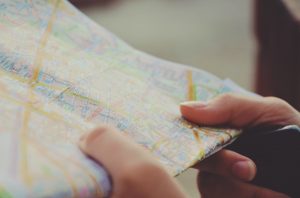O SI YO! (Oh See Yo) ‘Hello’ in my mother’s language of Cherokee.
Over the years I have flown literally hundreds, if not thousands, of hours to and from hundreds of Native American tribal lands. I remember many times flying at 40,000 feet above sea level and visualizing the land below the airplane. Sometimes it would be the dry deserts of Pueblo or the wet swamplands of the Seminole. Other times it would be flying over the Alaskan tundra or the plains of the Dakotas. I would contemplate the differences and similarities of our many tribes. The geographic regions could be seen in my mind’s eye as Woodland Indians, Plains Indians, Desert Southwest, Coastal, Mexican border, Canadian border, and Alaska/Hawaii natives. It seemed to me that each individual tribal culture is connected directly to its environment and what it needs for basic survival.
Despite our tribal cultural differences there are very basic and important similarities that connect all of us as a People. Similarities keep us connected such as our spiritual beliefs, sacred dance, singing, and even family values. Our desire and need for child safety and protection is the one common thread that can be seen from Kotzebue, Alaska, to Hollywood, Florida, and from Bangor, Maine, to San Diego, California. The very future of our tribes’ continued existence rests on how well we nurture ourselves and our youth.
 As recently as twenty years ago, I can remember how tribal lands were only visited by tourists during the spring or summer tourist seasons. A few non-natives who would venture into Indian Country on occasion, to buy toy bows and arrows for their children as souvenirs, or maybe to have their picture taken with a ‘real Indian’.
As recently as twenty years ago, I can remember how tribal lands were only visited by tourists during the spring or summer tourist seasons. A few non-natives who would venture into Indian Country on occasion, to buy toy bows and arrows for their children as souvenirs, or maybe to have their picture taken with a ‘real Indian’.
Today’s population of tourists and travelers infiltrate Indian Country as never before and many times bringing with them unhealthy or unsafe activities. There are more and more non-natives visiting our tribal lands. They arrive year round for many reasons such as casino resorts and hotels which offer vacation destinations. The land bases around many of our casinos have grown with additional stores, restaurants and hotels to accommodate the travelers. Whether you live close to a casino resort or not, we all need to be diligent in making sure our children are safe from harm.
As native people we need to constantly be educated and become aware of what might contribute to our tribal community becoming unhealthy. Native lands are witnessing and experiencing cases of child abductions and exploitation. The number of substance abuse cases, both medical and nonmedical, has risen dramatically over the past decade. The luring of tribal members off of the reservation for human trafficking is a serious and growing problem. The advent of the internet has been a means of communication that never existed in the past, but is now used in many unsafe ways.
I’ve said this before and you will hear me say it again; I do not have all the answers or quick solutions. However, I believe the only way to combat our problems is to be aware of them and understand what is working to help the situation. We must all become knowledgeable of what we can do as law enforcement, public safety officers, professional youth workers, community and tribal leaders. We wish to bring to this website a discussion of subjects and issues that concern child protection partners and community leaders across Indian Country.
So let us all commit to including the view of ‘40,000 feet above our lands’ as we strive to serve our communities. We can work together to remember that while our tribes have many differences, we more importantly share many priorities around the protection and safety of our youth and the safety and well-being of our communities. We want our children and communities to be strong and we want our families to be healthy. I would like to see family members, educators, law enforcement and other public safety professionals, all jointly invested in working together to protect and promote safety on our tribal lands.
If you need help developing a Child Protection Program, begin by completing our online needs assessment tool, or you can share your request with us by using the contact us form on this site. You can also email us at any time at tribaldatabase@ncjtc.org or call us at 877-712-6237.
There is no word for good bye in our language. What we say is Do Na Da Go huh I (Doe Naw Daw Go Huh ee).
UNTIL WE MEET AGAIN.
Ron Gurley, Native American Program Specialist,
Associate with the AMBER Alert Training and Technical Assistance Program

